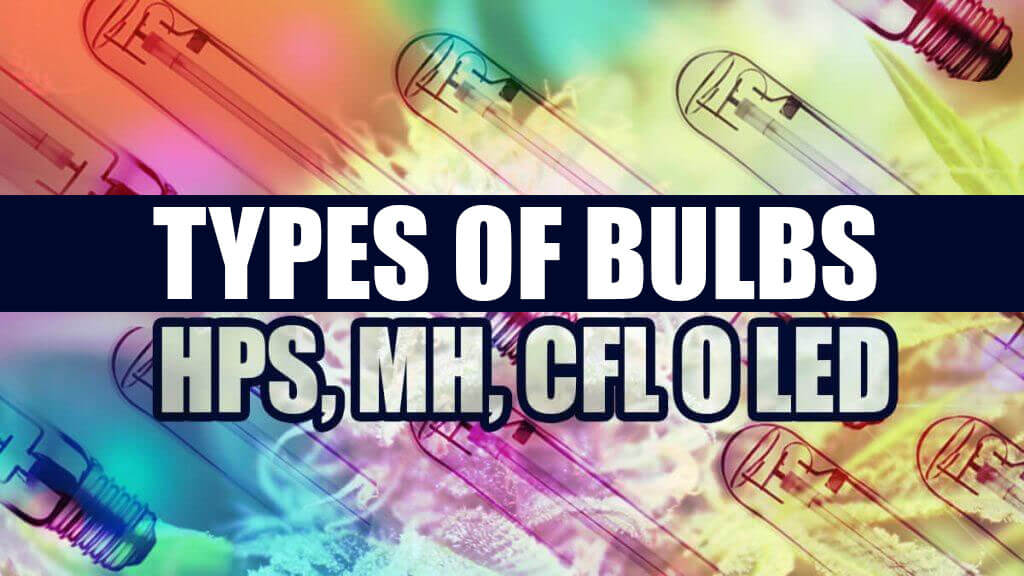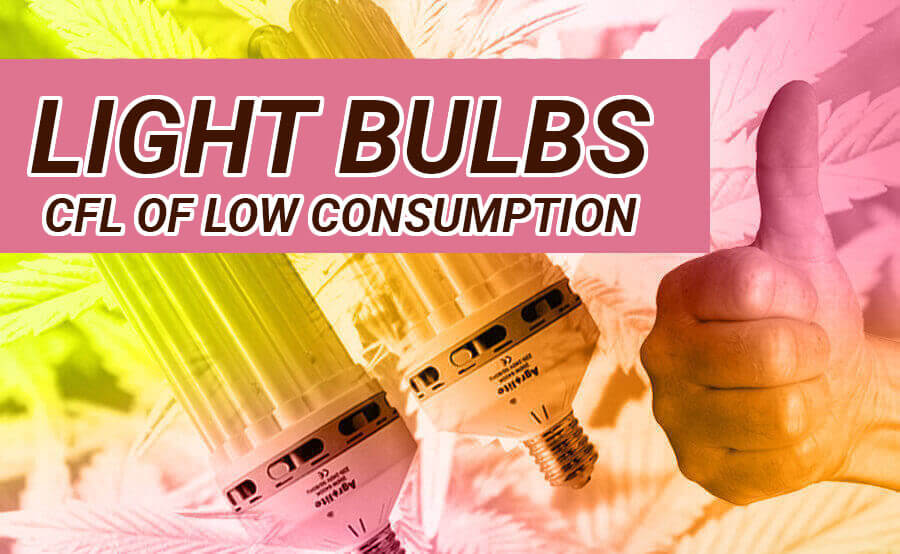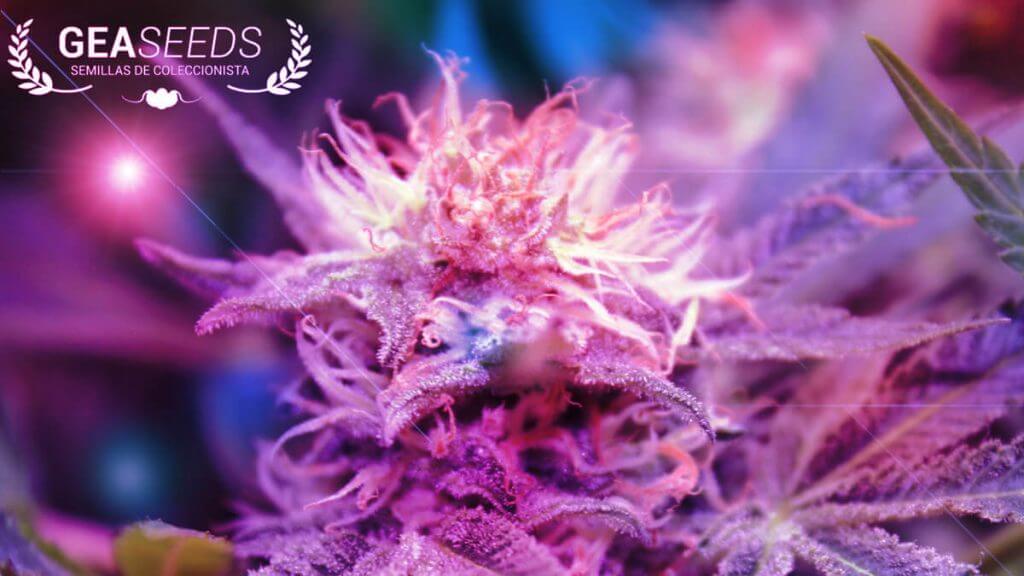Types of Bulbs: That the marijuana needs light for its correct development is something basic that every grower or fan of cannabis has clear. However, it is not known to all growers that the light should be of adequate intensity, as well as the optimum spectrum. Each color of the spectrum sends a separate signal to the plant, and each color stimulates a type of growth. In fact, plants use only certain parts of the light spectrum, namely those in the blue to red stripes.

types of bulbs
The intention of the following article is to offer a summary that provides the reader with all the necessary knowledge about the different types of light bulbs, as well as their benefits and disadvantages.
HID LIGHTS (HPS and MH)
First, we will describe and analyze the main features of HID culture lights, also known as high-intensity discharge lights. This type of light bulbs are the most commonly used for growing marijuana. In fact, HIDs are the light bulbs that have performed best throughout history.

HID HPS and MH LIGHTS
When we talk about HID lights, we must break down the two main types: metal halide (MH) and sodium equipment (HPS). These two types of bulbs differ in that MHs provide a “cold” bluish light, while HPS bulbs have a “warmer” reddish spectrum. Therefore, MHs are recommended for the vegetative phase and SPHs are recommended for the flowering phase. In case you can only use one type of light, it is advisable to use the HPS light. This type of light bulbs can be used for both growth and flowering and because of its consumption in relation to the light it produces, the most recommended is 600W.
In addition, these lamps are inexpensive and easy to install. The main drawback is that they emit a lot of heat and need to be accompanied by a good ventilation system that extracts the heat they generate. Another drawback is that they need to be replaced periodically as their power decreases. Finally, it should be noted that for its correct operation we will need a ballast.
FLUORESCENT LAMPS (CFL)

light bulbs
Another option is CFL or fluorescent lights. These lights are easy to buy, very inexpensive and can be used with any light fixture, i. e. without ballast. In general, the most commonly used for indoor crops are those that exceed 40W. This type of lights is offered, not only in different powers, but also with different light spectra such as white, ideal for the growth phase or warm light, recommended for the flowering phase because of its reddish spectrum.
This type of light bulb was the most common in early cannabis cultivation, but its low light output compared to its competitors caused them to fall into the background. However, they are still a very good choice for very small crops or for clones or mother plants.
LUCES LED
One of the options that has been hitting hard in recent years are LED lights. Today, the quality and performance of LED light bulbs has improved considerably. So much so that LED crops have ceased to be an option with few possibilities for cultivation, to one of the most recommendable. This is because the new models produce more lumens per watt, providing a light powerful enough for proper cannabis cultivation. Today it is possible to obtain the same or even a higher harvest by using LED lights, than by using HID lights. In fact, LED lights are the most energy efficient, offering lower consumption among all its competitors. Another positive feature for indoor cultivation is that it does not produce much heat, so there is no need for a powerful ventilation system. A ballast is also not required as they can be connected to any current.

cultivation with LED light
But it’s not all good news if you decide to grow a crop with LED lights. Among its drawbacks is the high price of the panels, which far exceeds the price of its two main competitors, the HPS, MH and CFL. In addition, we must be very careful when purchasing LED boards because there is no suitable industrial standardization. There are many LED models and not all of them are of sufficient quality to guarantee the correct functioning of an indoor crop.
Conclusion
As we have seen throughout the following article, the various types of lights have different characteristics that we must consider if we want to obtain an abundant harvest. Depending on the bulb model, we will have to follow different guidelines.
We recommend being clear about the size of the crop, the electrical installation, as well as how much we intend to spend on light to make it profitable. Once we are clear about these factors, we will be able to decide which bulb type best suits our needs. Generally, the most commonly used power is 600W, or its equivalent in HID or LED, although this varies according to the size of the interior and the number of plants. To find out the light power to be used and what size to choose, we recommend our article on indoor cabinets.




